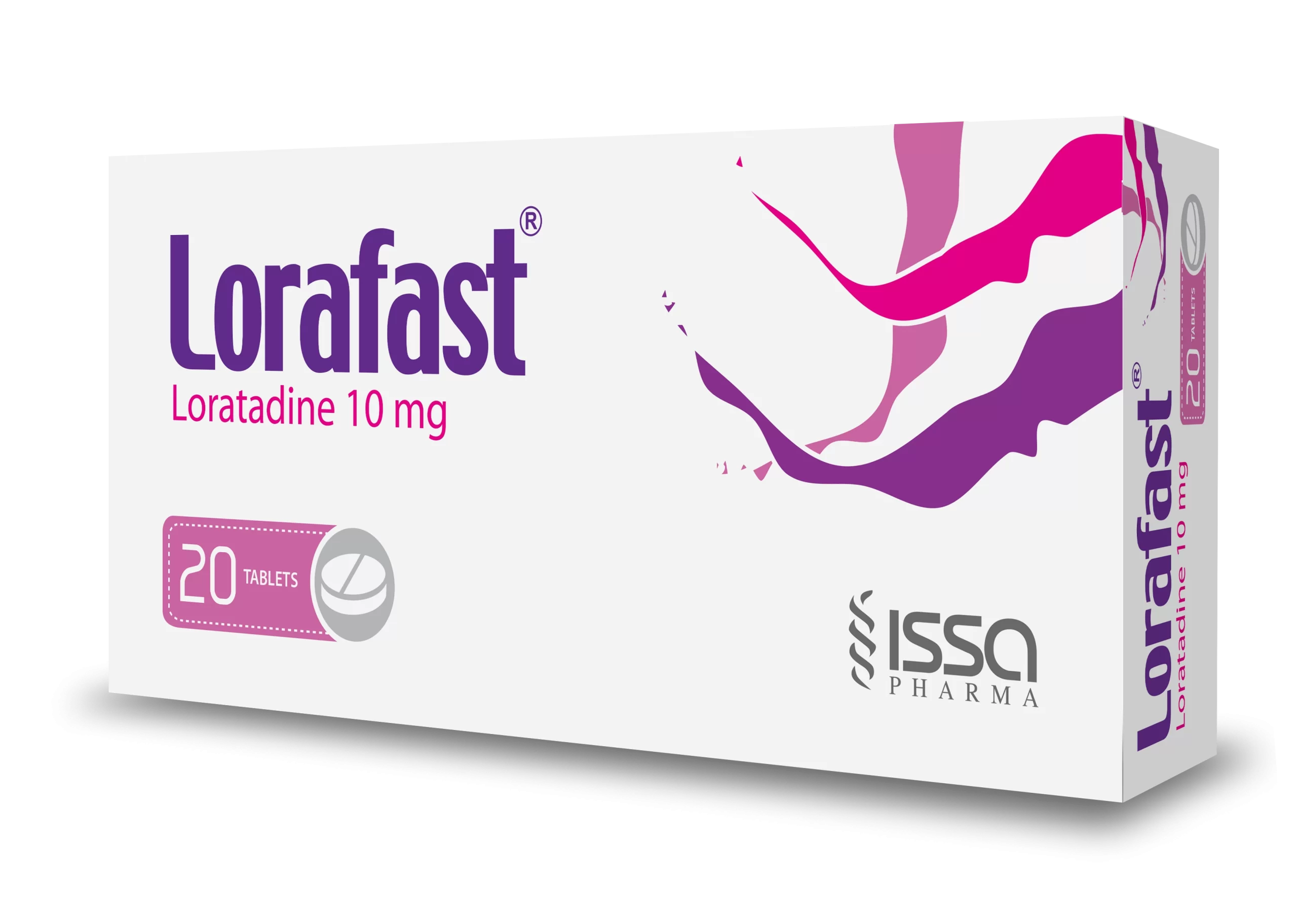COMPOSITION AND EXCIPIENTS
The active substance is loratadine. Each tablet of Lorafast contains 10 mg loratadine.
The other ingredients are lactose monohydrate, corn starch and magnesium stearate.
MECHANISM OF ACTION
Loratadine is a tricyclic antihistamine with selective, peripheral H1-receptor activity. Loratadine has no significant H2-receptor activity.
PHARMACOKINETIC PROPERTIES
Absorption and metabolism: After oral administration, loratadine is rapidly and well absorbed and undergoes an extensive first pass metabolism, mainly by CYP3A4 and CYP2D6. The major metabolite is active and responsible for a large part of the clinical effect.
Distribution: Loratadine is highly bound (97% to 99%) and its active metabolite moderately bound (73% to 76%) to plasma proteins.
Elimination: Approximately 40% of the dose is excreted in the urine and 42% in the faeces over a 10 day period and mainly in the form of conjugated metabolites.
INDICATIONS
Loratadine is indicated for the symptomatic treatment of allergic rhinitis and chronic idiopathic urticaria.
POSOLOGY AND METHOD OF ADMINISTRATION
Lorafast may be taken without regard to meal time.
Adults and children over 12 years of age: 10 mg once daily one tablet.
Pediatric patients:
Children 2 to 12 years of age with:
- Body weight more than 30 kg: 10 mg once daily one tablet.
- Body weight 30 kg or less: (5mg) 5ml of the syrup once daily, the tablets are not suitable in children with a body weight less than 30 kg.
Children under 2 years of age:
The safety and efficacy of Loratadine use in these patients has not been established.
Patients with hepatic impairment: Patients with severe liver impairment should be administered a lower initial dose because they may have reduced clearance of loratadine.
- Adults and children weighing more than 30 kg: An initial dose of 10 mg every other day is recommended.
- Children weighing 30 kg or less: An initial dose of 5 ml (5 mg) every other day is recommended.
Patients with renal impairment:
No dosage adjustments are required in patients with renal insufficiency.
Elderly: No dosage adjustments are required in the elderly.
CONTRAINDICATIONS
Hypersensitivity to the active substance or to any of the excipients.
WARNINGS AND PRECAUTIONS
- Loratadine should be administered with caution in patients with severe liver impairment.
- This product contains sucrose; thus patients with rare hereditary problems of fructose intolerance, glucose-galactose malabsorption or sucrose isomaltase insufficiency should not take this medicine.
- This product contains lactose. Patients with rare hereditary problems of galactose intolerance, the Lapp lactase deficiency or glucose-galactose malabsorption should not take this medicine.
- The administration of Loratadine should be discontinued at least 48 hours before skin tests since antihistamines may prevent or reduce otherwise positive reactions to dermal reactivity index.
DRUG INTERACTION
- When administered concomitantly with alcohol, Loratadine have no potentiating effects.
- Potential interaction may occur with all known inhibitors agents of CYP3A4 or CYP2D6 resulting in elevated levels of loratadine, which may cause an increase in adverse events.
- Increase in plasma concentrations of loratadine has been reported after concomitant use with ketoconazole, erythromycin, and cimetidine, but without clinically significant changes.
Pregnancy:
As a precautionary measure, it is preferable to avoid the use of loratadine during pregnancy.
Lactation:
Loratadine is excreted in breast milk, therefore the use of loratadine is not recommended in breast-feeding women.
Effects on ability to drive and use machines:
Patients should be informed that very rarely some people experience drowsiness, which may affect their ability to drive or use machines.
UNDESIRABLE EFFECTS
Common adverse reactions reported in clinical trials in pediatric patients aged 2 through 12 years: were headache, nervousness, and fatigue.
The most frequent adverse reactions reported in adults and adolescents were somnolence, headache, increased appetite and insomnia.
OVERDOSE
Overdosage with loratadine increased the occurrence of anticholinergic symptoms.
In the event of overdose, general symptomatic and supportive measures should be instituted and maintained for as long as necessary. Administration of activated charcoal as a slurry with water may be attempted. Gastric lavage may be considered. Loratadine is not removed by haemodialysis and it is not known if loratadine is removed by peritoneal dialysis. Medical monitoring of the patient is to be continued after emergency treatment.
STORAGE CONDITIONS
Store at temperature below 25 ̊C.
HOW SUPPLIED
Lorafast is supplied as blister strips (Aluminum – Clear PVC), each strip contains 10 tablets and each pack contains 1 or 2 blister strips (10 or 20 tablets per pack).

